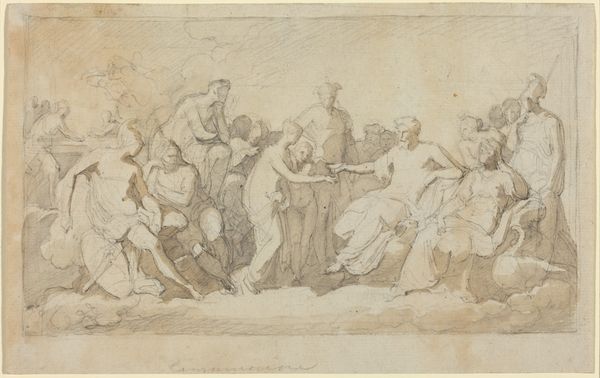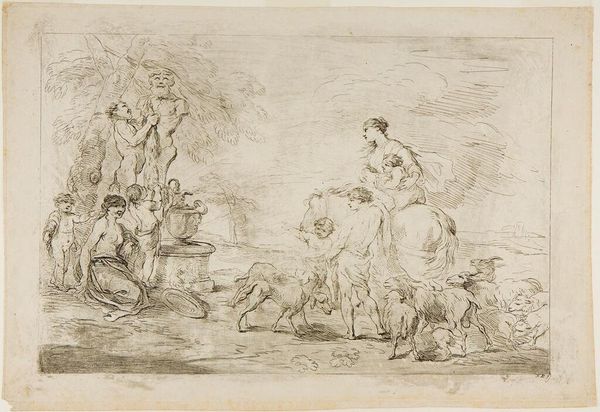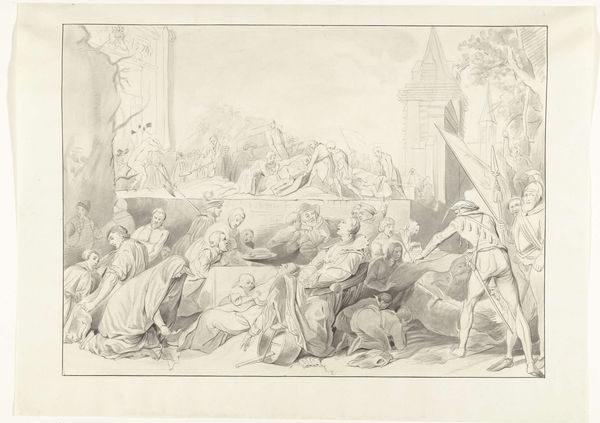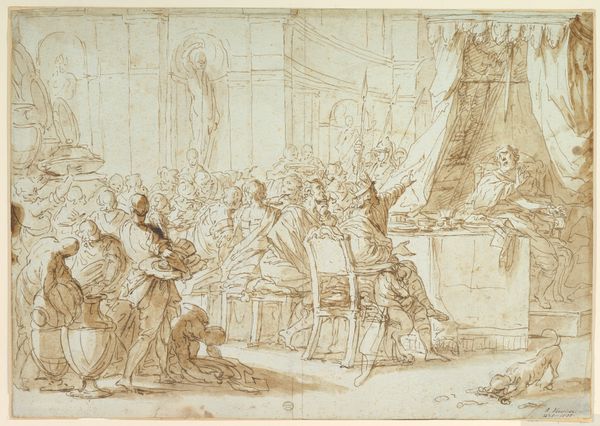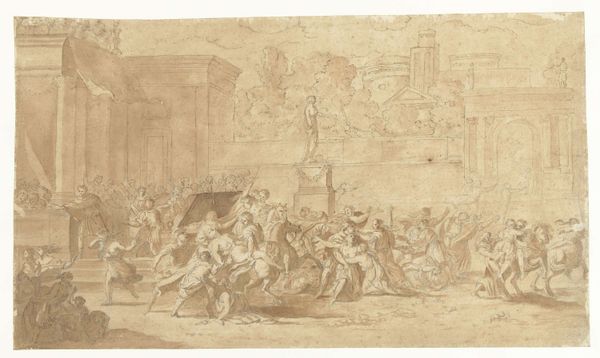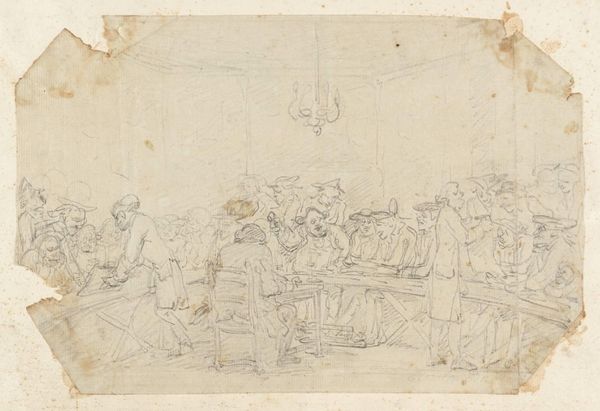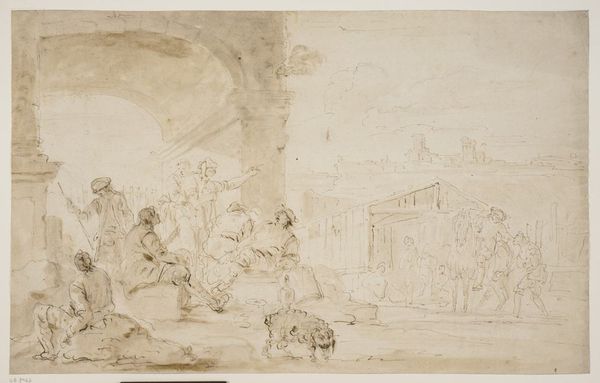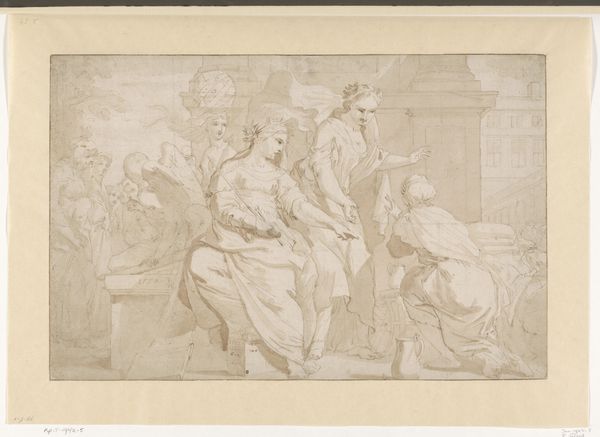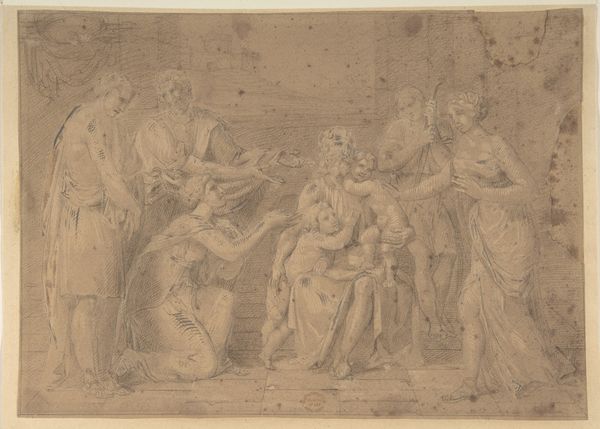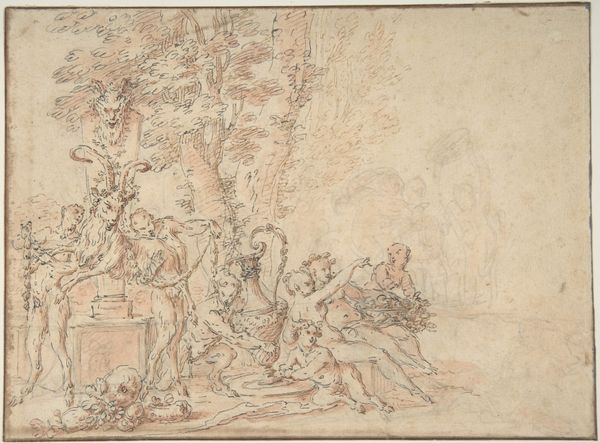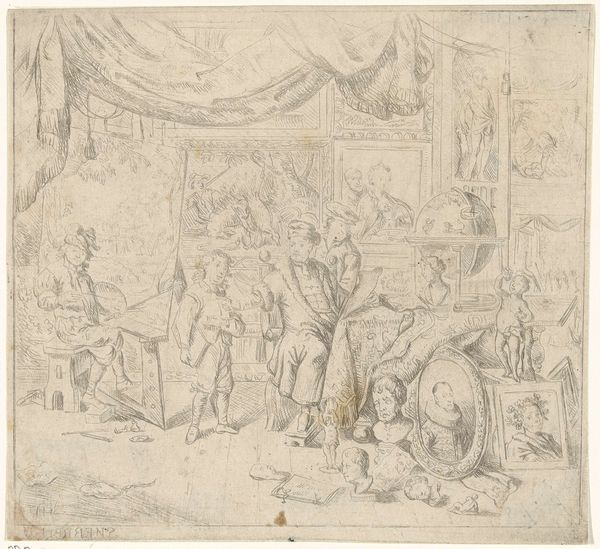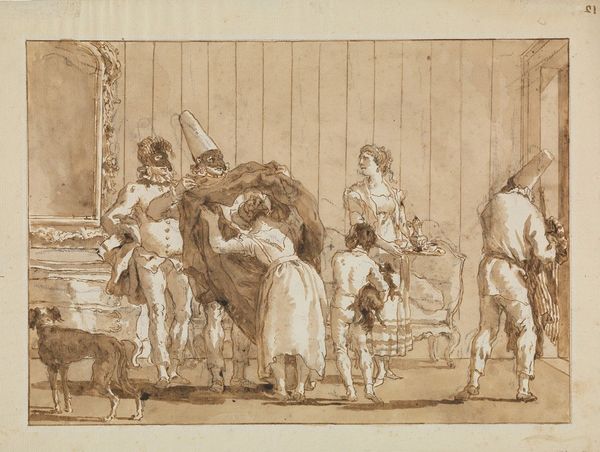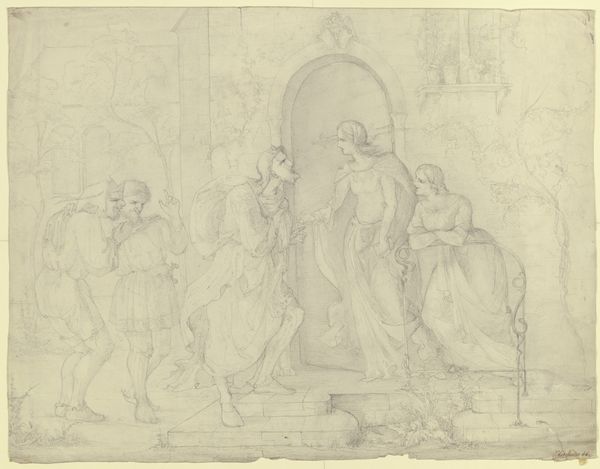
drawing, pencil, charcoal
#
drawing
#
narrative-art
#
charcoal drawing
#
figuration
#
pencil
#
charcoal
#
history-painting
Dimensions: 378 mm (height) x 468 mm (width) (bladmaal)
Editor: So this drawing, "Slutningsscenen af 'Balders Død'," made sometime between 1741 and 1782 by Peter Cramer, uses pencil and charcoal. It's a pretty busy composition; it depicts a dramatic scene with lots of figures in grief. What do you make of it? Curator: Immediately, I'm drawn to the starkness of the charcoal and pencil. Consider Cramer’s access to these materials: How did this availability shape artistic production and reception in 18th-century Denmark? The deliberate strokes weren’t just about illustrating a narrative; they were about transforming humble materials into commodities, representing power and artistry. Editor: Interesting. I hadn't thought of the materials as being connected to power. Curator: Absolutely! Think about the paper too – where did it come from? How was it produced? These elements aren't neutral; they contribute to the social and economic story surrounding the piece. Who would have purchased it, and how would they have used it? Editor: So you are saying that even this sketch speaks volumes about the means of its production and its social role? Curator: Precisely. Every line, every shading is connected to labor, trade, and perhaps even political undertones of the era. And don’t forget, even the choice of subject matter relates to a culture of consumption around stories and historical narratives. It’s less about Baldur’s death itself, and more about how that death becomes a tangible, consumable artwork. Editor: Wow, looking at it that way, I see how the physical artwork ties into broader contexts. Thanks for opening my eyes to the social underpinnings behind the materiality of art! Curator: My pleasure! There is always more to uncover when we view art through this perspective.
Comments
No comments
Be the first to comment and join the conversation on the ultimate creative platform.
